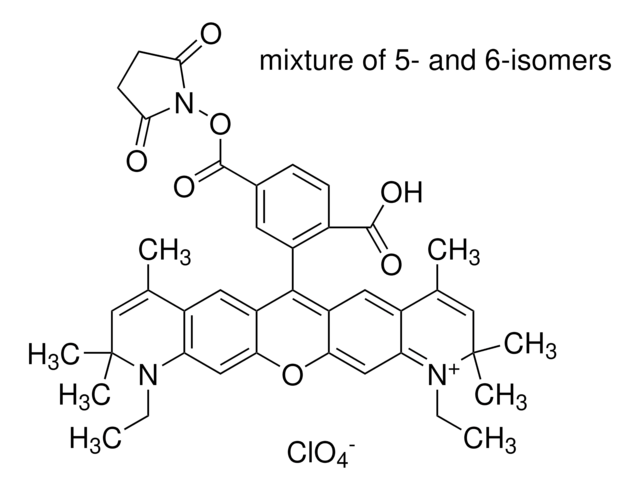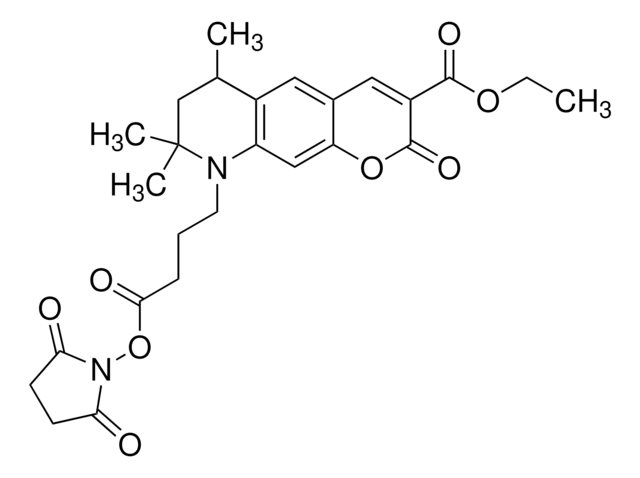67455
Atto 514 NHS ester
suitable for fluorescence
About This Item
Produits recommandés
Pureté
90% (Coupling efficiency with benzylamine, HPLC)
Forme
solid
Poids mol.
Mw 1111 g/mol
Fabricant/nom de marque
ATTO-TEC GmbH
Transmittance
254 nm
514 nm
Fluorescence
λex 511 nm; λem 533 nm±10 nm in PBS, pH 7.4
λ
(water/methanol with 0.1% perchloric acid)
Adéquation
suitable for fluorescence
Température de stockage
−20°C
Description générale
find more information here
Informations légales
Code de la classe de stockage
11 - Combustible Solids
Classe de danger pour l'eau (WGK)
WGK 3
Point d'éclair (°F)
Not applicable
Point d'éclair (°C)
Not applicable
Certificats d'analyse (COA)
Recherchez un Certificats d'analyse (COA) en saisissant le numéro de lot du produit. Les numéros de lot figurent sur l'étiquette du produit après les mots "Lot" ou "Batch".
Déjà en possession de ce produit ?
Retrouvez la documentation relative aux produits que vous avez récemment achetés dans la Bibliothèque de documents.
Notre équipe de scientifiques dispose d'une expérience dans tous les secteurs de la recherche, notamment en sciences de la vie, science des matériaux, synthèse chimique, chromatographie, analyse et dans de nombreux autres domaines..
Contacter notre Service technique




